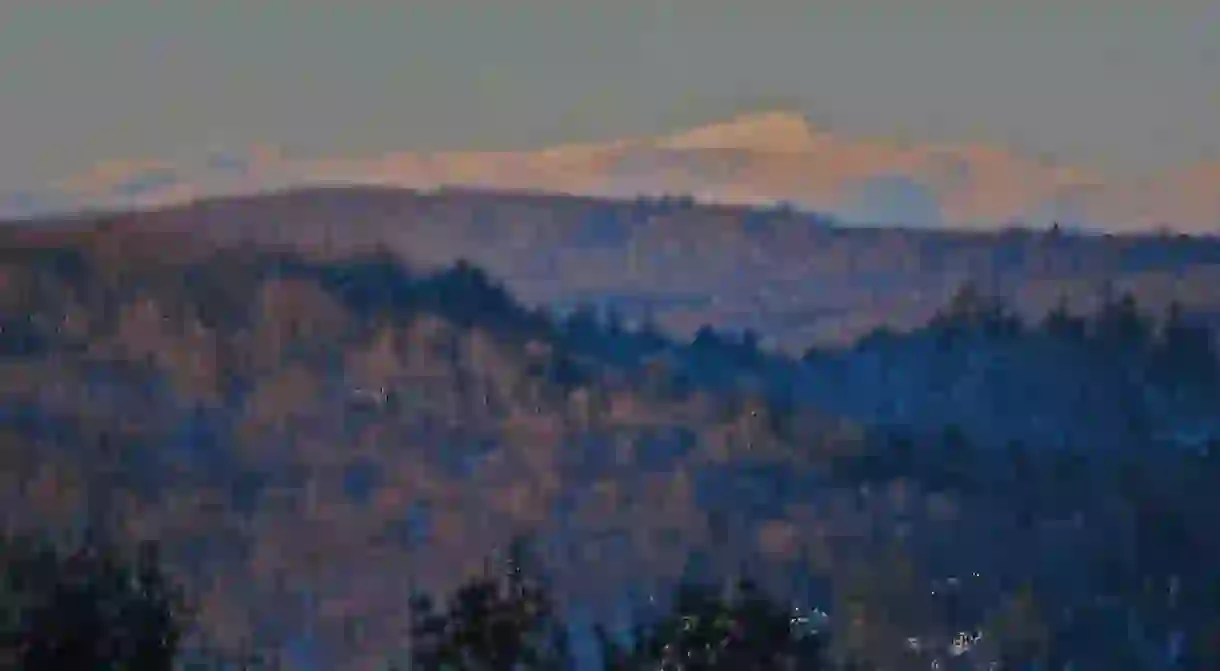Hiking The Long Trail In Vermont

Head to Vermont, and find America’s oldest long-distance hiking trail; built between 1910 and 1930 by the Green Mountain Club, The Long Trail covers 273 miles of varying terrain, from alpine sedge to pristine lakes, as it follows the ridge of the Green Mountains from the Massachusetts-Vermont state line to the Canadian border. Dubbed ‘the footpath in the wilderness,’ the Long Trail crosses the state’s highest peaks, traversing through backcountry trails and rugged landscapes. The LT, which served as the inspiration for the Appalachian Trail, is a primitive footpath that can be enjoyed by both experts and novice hikers. For tips and important info, read on.
Important Info
The Long Trail spans across the heart of Vermont, a state home to rolling hills and endless mountains. With its rugged terrain, however, comes steep grades, slippery slopes, and muddy paths. First-timers – should you choose to thru-hike, or opt for a single-day hike – should prepare for rainy weather and wet trails that sometimes verge on the side of dangerous; this includes wearing proper waterproof shoes, rain gear, and bringing fire starters and matches in a waterproof container. Expect rain, even during peak season, and snowfall, sometimes occurring in the early fall. While the trail is open year-round, the optimal time to thru-hike (this can take 20-30 days end-to-end) is from June to October, with many hikers heading here in late September to see the fall foliage. To avoid the black flies that plague the region, opt for late spring or early fall.
If you’re attempting to thru-hike, the more popular direction is northbound – southern Vermont is host to easier terrain, coinciding with the Appalachian Trail for 100 miles – saving the more difficult parts for the end of the trek. Be sure to follow the white trail blazes to stay on the path; or if you want to check out one of the 84 side trails, look for posted signs and blue blazes. Other important tips to ease the trek include learning about the terrain, conditions, local weather, and equipment before heading out; informing someone of your plans; being prepared to change plans or turn back should weather not permit moving forward; and bringing a guidebook, map, compass, and End-to-Ender’s Guide, fit with info on resupplying, hostels, and shuttles.
Along the 272 miles of footpath, the Long Trail has over 70 campsites and backcountry shelters for the long-distance hiker or weekend overnighter. These shelters are no longer than a moderate day’s hike apart, so hikers can opt for lodges during poor weather conditions; the trail is also close to many towns, should you need to find a place to stay overnight or resupply.
According to the GMC, essential items to bring include extra clothing, sun protection (sunglasses, sunscreen, and a hat), a flashlight, a first-aid kit, a repair kit (for gear), extra food should your plans change, water treatment or filtration system, a communication device, and emergency shelter. Because the LT is known for its many insects and black flies, always wear long pants and long-sleeved shirts, carry bug spray, and put up netting in the evening. If you’re planning to travel with a group, be sure to check the GMC website for information on permits, and always follow Leave No Trace principles and the HikeSafe Hiker Responsibility Code. Keep in mind that the LT is a prime place for hunters during autumn, so always wear an orange vest and avoid hiking when visibility is low.

What To See
The LT is a naturalist’s dream, heading through alpine and hardwood forests, and numerous mountains, including Glastenbury Mountain, Stratton Mountain, Killington Peak, Mount Abraham, Mount Ellen, Camel’s Hump, Mount Mansfield, and Jay Peak. While the trail, as it travels the ridge of the Green Mountains, boasts scenic views of Vermont’s hilly landscape, it’s also home to rare alpine vegetation as rows of trees and lush, green landscape fill every panoramic view. For the most scenic vistas, ascend Mount Abraham, Camel’s Hump, or Mount Mansfield, with the latter boasting the highest elevation at 4,393 feet high. Take precautions, however, as these summits can be difficult to climb when wet. Other noteworthy sights include the view from Baker Peak or Mount Glastenbury, the new suspension bridge in Johnson, or the many pristine lakes along the route. A vast wilderness, the Green Mountains are home to abundant flora and fauna, so wildlife viewing is always a perk for LT travelers.














